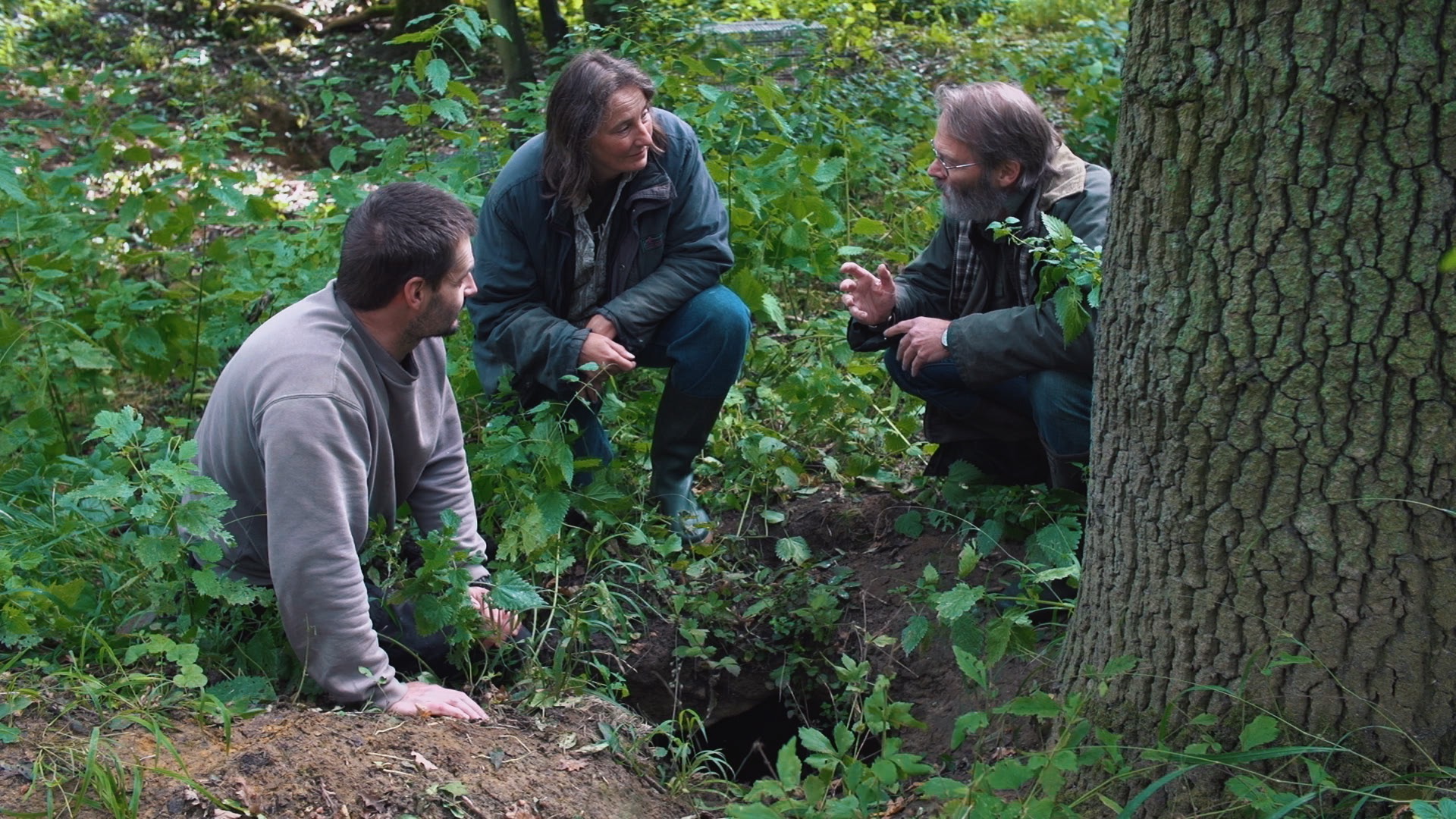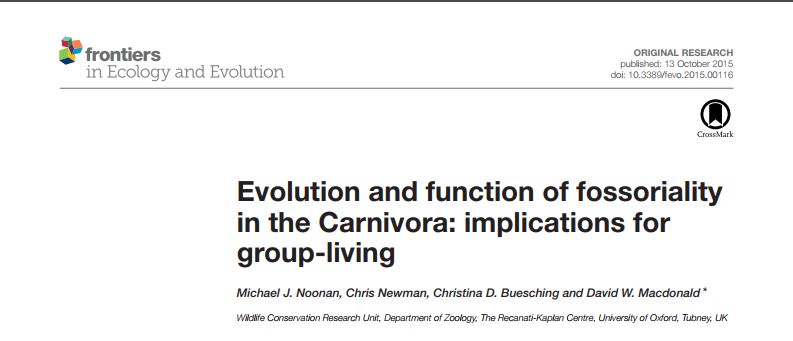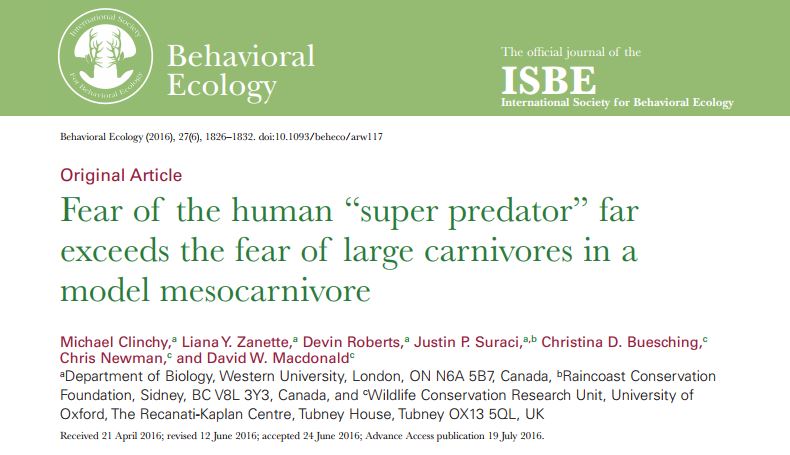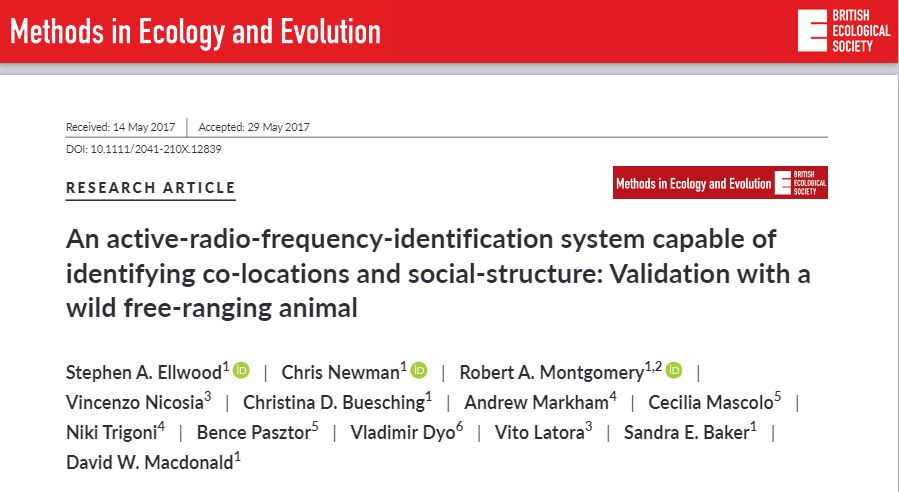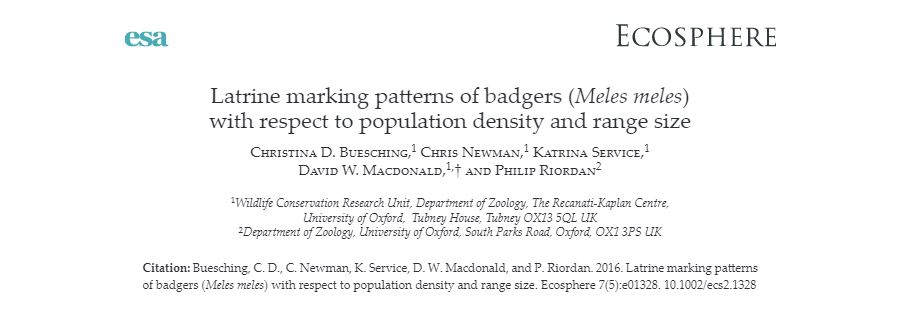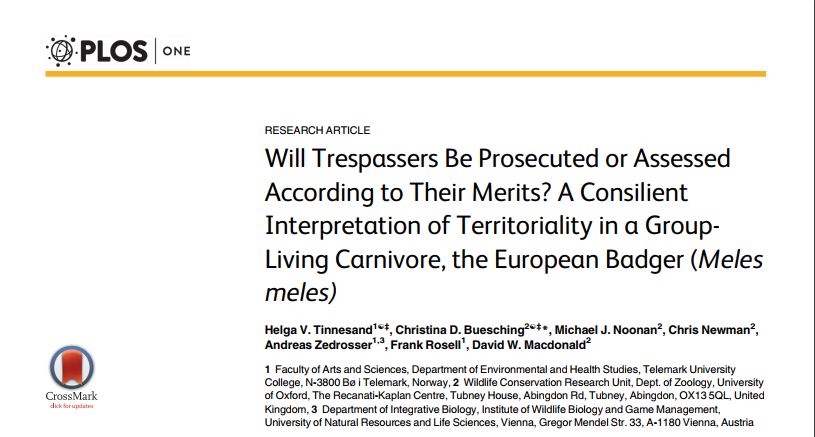Research
Social interactions
Our work has also revolutionised understanding of how badgers interact with each other both within and between groups. At the population scale our latest tracking approach has moved beyond conventional VHF and GPS systems, to use active RFID location tags (security tags detected by base-stations in the field). This has corroborated evidence from trapping badgers temporarily at groups other than their main sett of residence. During these excursions they visit neighbours and sometimes stay over in neighbouring setts for several days. Such visits obviate the need for permanent dispersal, which is uncommon in our population. We are currently using our genetic pedigree to investigate if the pattern of extra-group social contacts relates to visiting ‘extended family’ members, such that, for example, a female with cubs spread between several groups is more welcome to drop in at more setts than a female with less diaspora. For more information, see the recent paper listed led by Dr. Stephen Ellwood.
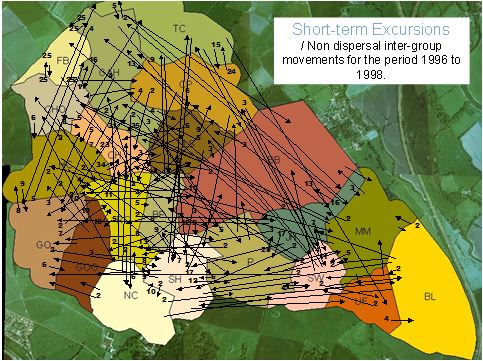
We have also invented a magneto-inductive underground tracking system, in collaboration with Prof. Andrew Markham at Oxford University’s Department of Computer Science. This new technology has revolutionised our understanding of the subterranean goings on within badger setts. For instance, badgers don’t simply forage through the night, but return for a nocturnal ‘siesta’, but when they take their mid-night break they use peripheral, shallow chambers, whereas when sleeping soundly by day they use deeper chambers. We also see intriguing patterns in who sleeps with whom, and that when females change chambers, males often change chambers to accompany them. Very interestingly, this work has also exposed that badgers in different body-condition exhibit different activity / rest budgets in relation to prevailing weather (see below). For more information, see those recent papers listed led by former doctoral student Mike Noonan – now a researcher at the Smithsonian Institute.
In terms of inter-individual interactions, badgers give each other little credit. For instance, badgers are naturally infested with a scourge of fleas and lice, which thrive in their underground sett chambers. Consequently, they spend a lot of time self-grooming, but there are parts that are hard to reach, for which they solicit the help of other group members. This ‘allo-‘ or ‘mutual-‘ grooming involves substantial reciprocity, but grooming partners do not trust easily, ceasing grooming within one second of each other in a classical example of a ‘tit-for-tat’ strategy. Similarly, although allo-maternal behaviour (i.e. cubs being tended by an individual other than their mother) is a common feature of other group-living carnivore societies, its occurrence remains tentative among badgers. Several litters of cubs can be raised in one sett at the same time and, from genetic and video-surveillance evidence, a female might occasionally suckle cubs that is not her own. Equally she may ‘kidnap’ cubs if she has lost her own litter and it can often be difficult to distinguish between cubs sucking under the bellies of females versus trying to force the female to scent mark, giving the cub the group’s odour and aiding social integration at an age when offspring are too immature to produce their own scent secretion.
Living at high-density and in groups also requires that badgers are able to communicate with one another effectively, and this is the specialist interest area of project leader Christina Buesching. Living underground and being active at night limits their use of vision. Badgers are also surprisingly quiet animals, although we have identified a repertoire of vocalisations, where playful cubs are especially chirpy. Principally though, badgers communicate using scent, or ‘olfactory’ signals. These smells are produced by two glandular secretions, the subcaudal glands and the anal glands.
Subcuadal gland (literally a pair of glands under the tail) secretion is under voluntary control; and using gas chromatography and mass-spectrometry (GCMS) our work has shown this fatty secretion encodes individual-specific information, such as age, sex, reproductive status and group membership. Behaviourally, infra-red video surveillance has shown us that badgers use this secretion to anoint themselves, and each other, as well as objects in their environment. Anal gland secretion is egested with faeces, which badgers deposit in shared latrines lying between social groups. Given our discovery that badgers trespass beyond these borders, however, clearly these do not delimit hard territorial borders, as once thought. This has forced us to re-asses the function of latrines, where chemical analysis shows that anal gland actually encodes information about the identity and status of the depositor, and so badgers can recognise the anal gland smell of familiar group members, versus neighbours, versus total strangers, and react differently to each. Latrines may thus act as a ‘social media’ site, where information is exchanged, or to define passive range limits – for instance, beyond this point badgers foraging in the opposite direction will already have depleted available worms resulting in a diminishing return, which is different to ‘trespasser will be prosecuted’. For more information, see the recent paper listed, co-led by Dr. Veronica Tinnesand, a researcher at Telemark University, Norway.
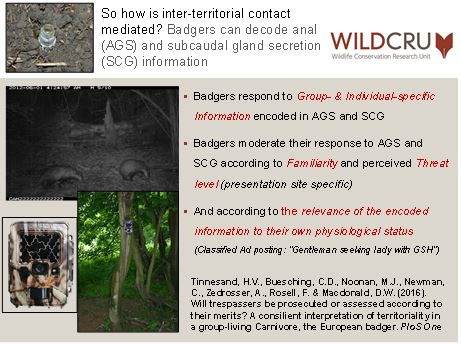
In overview, we thus see that badger groups are far more nebulous than formerly realised. They are neither exclusive breeding cliques, nor do members engage in any substantive cooperative behaviour. Instead they essentially comprise little more than assemblages of individuals acting as they might at low density, but forced together to co-share a common subterranean den.
This paradigm shift in understanding badger society has important implications for how badgers re-organise their society after management interventions, such a TB culling or sett closures for development.
The Badger Project
Background
How do we study badgers?
Insights into badger society
Genetics and mate choice
The effects of weather conditions on badger population dynamics
What we need
Our current team
References







